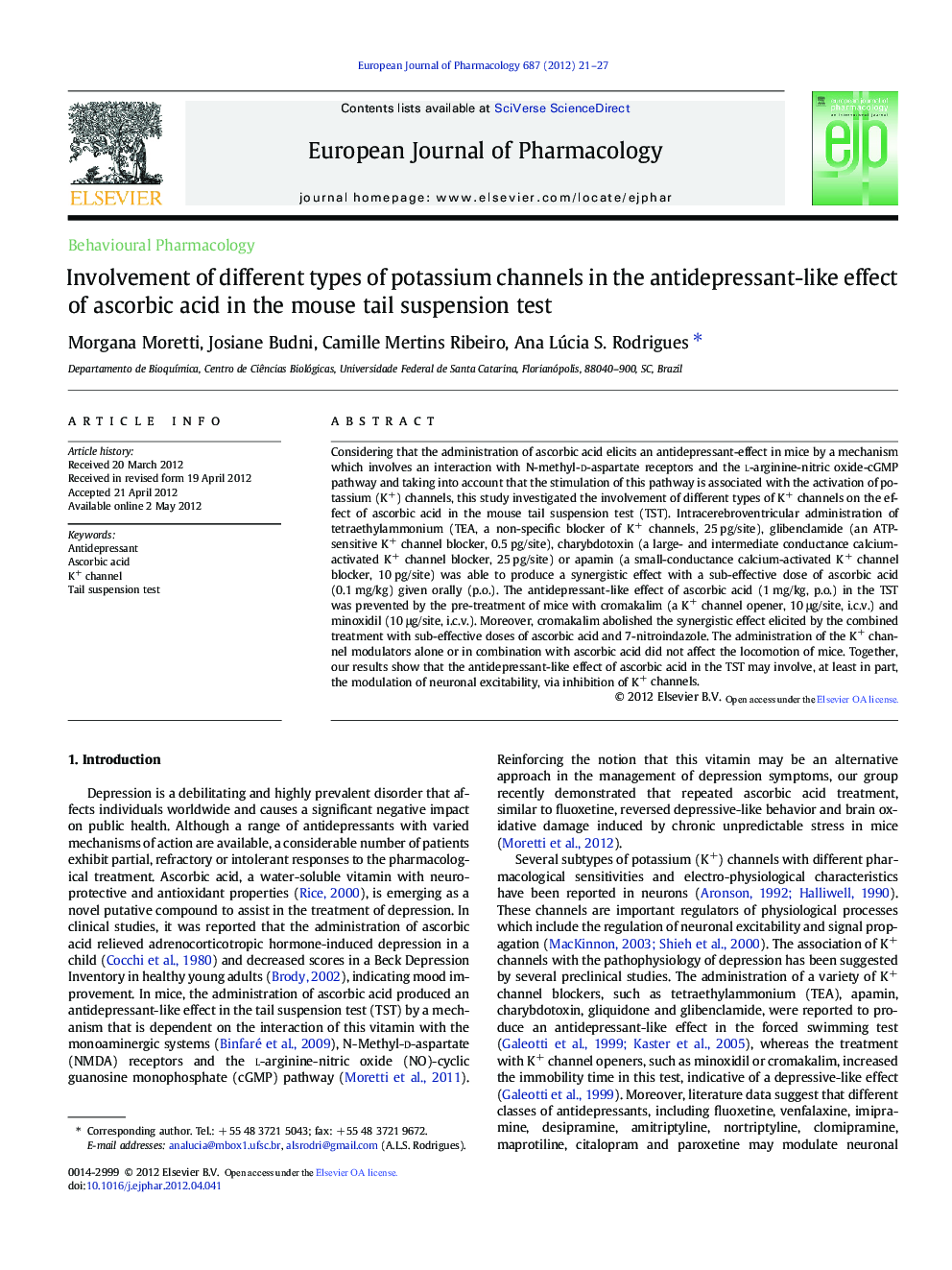| کد مقاله | کد نشریه | سال انتشار | مقاله انگلیسی | نسخه تمام متن |
|---|---|---|---|---|
| 5829469 | 1558994 | 2012 | 7 صفحه PDF | دانلود رایگان |

Considering that the administration of ascorbic acid elicits an antidepressant-effect in mice by a mechanism which involves an interaction with N-methyl-d-aspartate receptors and the l-arginine-nitric oxide-cGMP pathway and taking into account that the stimulation of this pathway is associated with the activation of potassium (K+) channels, this study investigated the involvement of different types of K+ channels on the effect of ascorbic acid in the mouse tail suspension test (TST). Intracerebroventricular administration of tetraethylammonium (TEA, a non-specific blocker of K+ channels, 25 pg/site), glibenclamide (an ATP-sensitive K+ channel blocker, 0.5 pg/site), charybdotoxin (a large- and intermediate conductance calcium-activated K+ channel blocker, 25 pg/site) or apamin (a small-conductance calcium-activated K+ channel blocker, 10 pg/site) was able to produce a synergistic effect with a sub-effective dose of ascorbic acid (0.1 mg/kg) given orally (p.o.). The antidepressant-like effect of ascorbic acid (1 mg/kg, p.o.) in the TST was prevented by the pre-treatment of mice with cromakalim (a K+ channel opener, 10 μg/site, i.c.v.) and minoxidil (10 μg/site, i.c.v.). Moreover, cromakalim abolished the synergistic effect elicited by the combined treatment with sub-effective doses of ascorbic acid and 7-nitroindazole. The administration of the K+ channel modulators alone or in combination with ascorbic acid did not affect the locomotion of mice. Together, our results show that the antidepressant-like effect of ascorbic acid in the TST may involve, at least in part, the modulation of neuronal excitability, via inhibition of K+ channels.
Journal: European Journal of Pharmacology - Volume 687, Issues 1â3, 15 July 2012, Pages 21-27